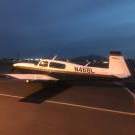Minnesota Crash
-
Members Online
- Hall Liu
- mluvara
- gummirat
- neilpilot
- varlajo
- PK Dude
- ta2too
- Mreed420
- eman1200
- LOCOLJ
- Max Clark
- skykrawler
- Nick G
- Aaviationist
- KSMooniac
- VetRepp
- EricJ
- Chris B
- Mmrkulic
- pirate
- bluehighwayflyer
- Skyland
- flyingscot
- Fritz1
- IvanP
- rsimmons345
- Alan Maurer
- N201MKTurbo
- Echo
- donkaye, MCFI
- jeremyc209
- Mooney in Oz
- R Van Dyck
- kortopates
- Jackk


Recommended Posts